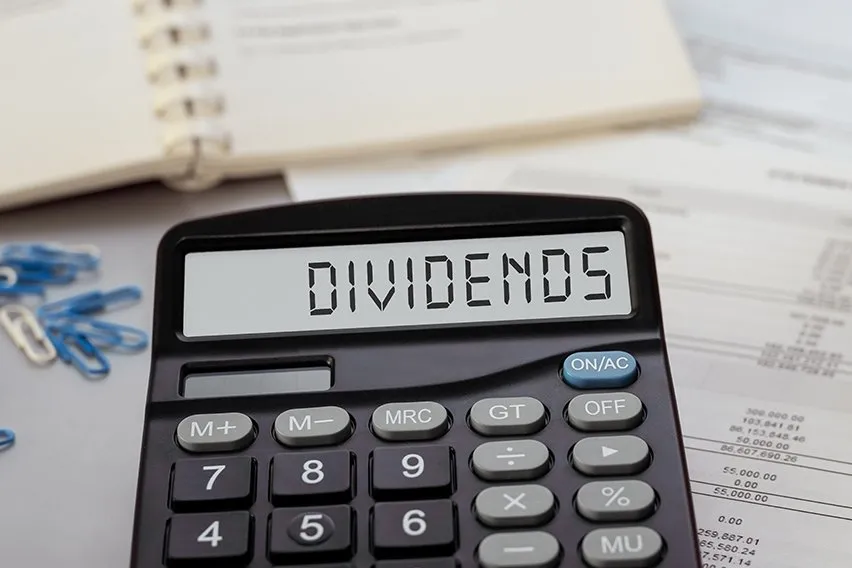What Is Churn Rate & How To Calculate It?

Churn is a costly reality that all businesses face. It affects even the largest and most successful companies.
Even if you work hard, not every customer will keep coming back. Sometimes a client may just miss a payment and never be heard from again.
Losing customers may not be something worth celebrating, but it is unavoidable. You can learn smarter ways to build stronger customer relationships.
Here’s What We’ll Cover:
How to Calculate Customer Churn Rate
What Is the Monthly Churn Rate?
What Is a Good Customer Churn Rate?
What Is a Negative Churn Rate?
What Makes Churn Rate Hard to Understand?
What Business Lessons Can You Learn From Churn?
What You Use Your Churn Rate For
How Does User Churn Rate Affect Other SAAS Metrics?
What Is the Churn Rate?
A customer churn rate measures how many customers leave your service over time. You can calculate your annual churn rate by dividing it by the number of customers you lose each year.
Customer churn increases as your churn rate increases. Conversely, a low churn rate means retaining more customers.
It is typically cheaper and easier to keep your customers than to acquire new ones. Knowing what causes formerly loyal customers to abandon ship is vital for any business to succeed. Subscription-based businesses whose revenues are primarily comprised of subscription fees are most likely to benefit from this measurement. A good or bad churn rate can vary from industry to industry.

Churn Rate Examples
Many Service as a Software (SaaS) companies, specifically in the B2C space, publish their churn rates to show how well they retain customers. Here are some examples to guide your understanding of your own churn rate – what it should look like for your business and how some famous companies score.
Netflix: 2.5% Monthly Churn Rate
Netflix has the lowest churn rate among video streaming services. Netflix has an astonishingly low monthly churn rate of 2.5%, which means that over 97% of its customers stay with the company. Among the reasons may be its expansive catalog of shows and its well-established brand voice.
Disney+: 4.3% Monthly Churn Rate
To distribute its shows online, Disney launched its own streaming service instead of joining other streaming services. After Disney+ was released in 2019, users flocked to it. Disney+’s monthly churn rate of 4.3% is, therefore, not surprising.
How to Calculate Customer Churn Rate
You can measure your customer churn rate through the following methods.
- The total number of customers lost during a specific period.
- The percentage of customers who left during a specified period.
- Loss of recurring business value.
- Percentage of recurring revenue lost.
To calculate your churn rate, take your monthly recurring revenue (MRR) at the beginning of the month and divide it by the revenue you lost last month. Sales made should not be included, as you are looking at how much revenue you lost overall.
Here is the customer churn rate formula:
Customer Churn Rate = Number of churned customers divided by the total number of customers
Alternatively, you can calculate the churn rate by dividing the lost subscribers by the number of subscribers (as the denominator) you had at the beginning. Alternatively, you can choose to calculate the number of subscribers you had at the end rather than at the beginning.
Negative churn rates indicate that despite losses incurred, the company made profits.
An annual plan uses the same formulas above, but with a different date interval, as illustrated below.
Annual customer churn formula: (canceled customers in the last 365 days divided by active customers 365 days ago) x 100
Annual revenue churn formula: (MRR lost as a result of downgrades and cancellations in the last 365 days divided by MRR 365 days ago) x 100
As an example, here’s how you calculate your churn rate:
Let’s say you want to calculate your churn rate for 2019.
- You had 500 customers in January 2019.
- You added 250 new customers in 2019. (The churn rate for 2019 will not include this.)
- By the end of December 2019, 150 of the 500 existing customers left.
In 2019, you had a churn rate of 30% (150 lost customers ÷ 500 existing customers).
How Often Should You Calculate the Churn Rate?
The longer the period, the better. Quarterly churn rate can provide a snapshot of overall trends in your customer base, while annual churn rate provides a way to assess YoY performance.
The quarterly and annual churn rates can both indicate whether your long-term customer retention efforts are working.
Regardless of how you calculate it, customer churn is terrible. Let’s look at good churn rates so that we can lower our own.
What Is the Monthly Churn Rate?
The monthly churn rate represents the number of customers lost during a given month. You can calculate your monthly churn rate by dividing the number of customers you lost by the number you had at the beginning of the month. Then multiply the result by 100.
What Is Revenue Churn?
Alternatively, revenue can be used as a measure of churn. A company’s financial performance and outlook can be measured by tracking and understanding revenue churn.
How Do You Calculate Revenue Churn Rate?
Calculate the percentage of revenue that has churned by subtracting any upgrades or additional revenue from existing customers from the monthly recurring revenue (MRR) you lost that month. Divide the result by your total MMR at the beginning of the month. Do not include new sales in the month, as your goal is to determine how much revenue you lost. Revenue gained from existing customers is revenue that you gain.
For example, a company with a $500,000 MRR at the beginning of the month, a $450,000 MRR at the end of the month, and $65,000 MRR in upgrades that month would have a -3% revenue churn rate.
What Is a Good Customer Churn Rate?
The harsh reality in conducting business is that no matter how great your service or products are, you will lose customers. You can still achieve an acceptable churn rate despite this.
An average churn rate is anywhere between 5 – 8%. For companies with a churn rate that is 2%, it would be considered as good.
In some sectors, you can find some data that will help you predict what will happen.
These are a few examples of the rate of attrition in some common industries.
- American Credit Companies typically have churn rates of 20%.
- Software-as-a-service report customer churn rates between 5-7%
- Netflix boasts of a churn rate of 2.4%, better than its competitor Hulu at a 4.1% churn rate.
- Many retail banks have a churn rate between 20-25%
Not all business models are the same, and even businesses with the same business model might define churn differently.
When your business uses a subscription model, these considerations will affect your client churn rate.
- Length of subscription contracts
- How much does the lifetime value of a customer change with the length of their contract?
- How many new customers do you attract every month?
What Is a Negative Churn Rate?
A negative churn rate occurs when added revenue from new customers (expansion revenue) surpasses lost revenue from churned customers.
A negative churn rate is usually caused by activities such as upgrades, service options, add-ons, etc.
What Makes Churn Rate Hard to Understand?
Churn rate calculation may seem straightforward, but how exactly those two numbers are defined can have a big impact on the results. Below are issues that make churn rates difficult to understand.
Counting Customers Is Difficult
Counting the total number of customers over a given period, say a month, is not a well-defined concept since customer numbers can change as the month progresses due to sign-ups and cancellations.
If you have many new customers in comparison to the number of existing customers, that can have several effects on your churn rate:
- A company’s new customers tend to churn more frequently than its long-term customers.
- When calculating your churn rate, the number of customers you use on day one will differ from what it is on the last day of the month.
Moments of Churn Are Defined in a Variety of Ways
A company defines a moment of churn in two ways:
- When subscriptions end and renewals do not take place.
- At the time of cancellation.
New customers cannot churn in their first month, so the churn rate calculation is not distorted by new customer growth.
Often, the moment of cancellation is referred to as churn to achieve the highest churn rate. Churn is a lagging indicator, and you shouldn’t view it in real-time.
Customer Segments Churn Differently
There may be a business plan or a consumer plan. The churn rates will be wildly different between the two.
Growth in a segment with a higher churn rate may be misconstrued as an increase in churn overall, leading you down the wrong path of trying to fix a nonexistent issue.
The Season Impacts Churn Rate
Your churn rate may exhibit changes that correspond with the seasonality of your business that is difficult to understand until you’ve gone through multiple cycles.
What Business Lessons Can You Learn From Churn?
Churn rate analysis can provide a wealth of insight if you know what to do with it.
Reducing churn will directly correlate with increasing revenue.
Getting someone’s trust to the point where they become a subscriber is already a big accomplishment. Increasingly popular products lead to more loyal subscribers as your customers become more attached to them.
When a customer churns, this indicates that something went wrong. Although sometimes it can be beyond your control, churn rates can alert you to various important actions you should take.
Ways to Reduce Customer Churn
You can prevent churn by taking these steps.
Understand why customers churn
Finding out why a customer leaves your service is the first step to fixing it. Interviewing and conducting a survey on customers who have churned may provide insight into their reasons for leaving.
Provide supporting resources and education
Customers will likely abandon you if they feel that your products or services do not benefit them. Consider providing digital resource centers, blog updates, and educational email onboarding journeys based on your specialty.
Ensure you are targeting the right audience
Align your marketing strategies with your offer to better target customer segments.
Constantly exceed customer expectations.
Dissatisfaction and unmet expectations are the top reasons for client churn. Be honest about what your customers can expect and what you can deliver.
Provide awesome customer service
Customer service should be proactive rather than reactive. A customer outreach initiative is a good practice to ensure that any problems are detected early on.
Know the signs that a customer is more likely to leave
Has it been a month since they last came in? Are their sessions brief and infrequent? Some of these signs can alert you that a customer may be leaving your services. You can step in and provide them with resources and support to encourage them to stay.
Let some customers churn
Client churn should not be ignored nor should you provide poor service. It means that you should know when to give up and let a customer go.
In what ways do you know when it’s time to let go of a client? Look at the profit. Identifying a group of clients at risk of becoming competitors is best to determine if they are worth preserving.

What You Use Your Churn Rate For
Churn inhibits growth. The reduction of your churn rate accelerates your revenue growth.
The following are a few ways you can use a churn rate:
- To assess the company’s health and long-term prospects.
- Knowing whether a company is increasing customer retention every month.
- Identifying changes that adversely affected customer retention.
- Estimating the customer lifetime value.
- Find out which customers are most successful with your products.
- Forecasting your company’s performance.
Churn Rate for E-commerce
Historically, companies with recurring revenue used churn rates to measure their performance, but now leading e-commerce companies also use the metric.
E-commerce companies find calculating churn rates more challenging, but it is very doable and worth the effort. The only issue is that non-subscription-based e-commerce companies must understand what constitutes a churn event.
A manageable churn rate is crucial for the growth and sustainability of your e-commerce business, whether it’s a subscription or a non-subscription store.
Employee Churn Rate
Employee churn rate indicates how frequently employees leave a company within a given period.
It is important to note that employee churn rates can vary widely among companies and industries.
Divide the total number of employees who resigned within a given period by the total number of employees in that period to calculate Employee Churn Rate.
How Does User Churn Rate Affect Other SAAS Metrics?
A company’s churn rate is a direct reflection of the value of the product and features it offers to customers. Customer churn can be reduced by continually optimizing your product. A great product aligned with a value metric should have nearly zero cancellations per month.
Key Takeaways
For a business to thrive, it must retain and grow its customer base. By keeping an eye on your churn, you’ll be able to track your performance and take action that will lead to success. It may seem unpleasant to calculate churn rate, but tracking it is crucial to understanding where customer service is falling short. Consider the customer churn rate over the course of a year or a month, invest in your customer service reps, and watch your churn rate decrease exponentially. Find more articles like this on Resource hub.
RELATED ARTICLES

 What Is a Business Line of Credit?
What Is a Business Line of Credit? What Is Interest Rate Parity (IRP)? An Overview
What Is Interest Rate Parity (IRP)? An Overview Business Structures Advantages and Disadvantages
Business Structures Advantages and Disadvantages What Is Residual Value & How to Calculate It?
What Is Residual Value & How to Calculate It? What Are Franked Dividends & How Does It Work?
What Are Franked Dividends & How Does It Work? The Complete Guide to Ceteris Paribus
The Complete Guide to Ceteris Paribus